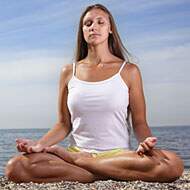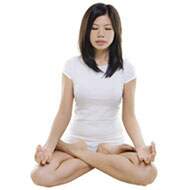Proper Breathing Guidelines For Pranayama
Pranayama or the Breath of Life is one of the most important aspects of yoga.
In order to gain the true benefits from the practice of yoga, one must master the art and science of breath control or Pranayama.
Unfortunately, many people neglect Pranayama and focus solely on the physical postures that are a part of yoga. If you practice yoga, you should not ignore Pranayama as it is an integral part of yogic practice and both Pranayama and the Asanas complement each other.
Pranayama is largely misunderstood and overlooked due to a lack of knowledge. Pranayama is a powerful tool and should be performed in the proper manner in order to gain its full benefits and avoid any ill effects. Keep in mind that Pranayama should always be learnt under the guidance of a trained instructor. Here are some guidelines for Pranayama that will help you to perform this powerful yogic technique in the proper manner:
- When to Practice Pranayama. The ideal time to practice Pranayama is early in the morning just after you wake up. In the morning the air is fresh and there is maximum oxygen content in the atmosphere. Moreover, when you practice Pranayama early in the morning, you feel fresh and invigorated throughout the day. If you cannot practice Pranayama early in the morning, you can practice it in the evening or at any other suitable time provided that you follow the other guidelines for Pranayama.
- Where to Practice Pranayama. If the weather conditions permit, it is best to perform Pranayama outdoors in a park or garden. It can also be performed in a well-ventilated room. The main criteria when picking a place to practice Pranayama is to ensure that you are in a quiet place where you can sit comfortably and not be disturbed. A quiet corner of the office is also a good spot to take a five minute Pranayama break to recharge yourself.
- Diet for Pranayama. A simple vegetarian diet is considered to be the most suitable for a person who is practicing yoga. This form of diet is also called a Sattvic diet or a Yogic diet. However, if your lifestyle does not allow you to follow such a diet, you can continue to follow your current diet. However, do keep in mind that there should be at least a three to four hour gap between your last meal and the practice of Pranayama. Drinking water before Pranayama is acceptable. Ideally you should sip on some water 30 minutes before your Pranayama practice.
However, if you feel thirsty while practicing Pranayama it is okay to take a sip of water. - What to Wear. The clothes that you wear for Pranayama should be loose and comfortable. Cotton clothing that will allow you to sit comfortably for long periods of time is the best option. If you perform Pranayama at the end of your yoga practice, it is a good idea to wear flexible clothing that will allow you to perform all the asanas properly. There are many brands that produce clothes that are specifically designed for yoga practice and you can take your pick from any of them.
- Posture for Pranayama. Pranayama is normally performed in the Padma Asana of the Lotus Posture. This is the traditional cross-legged sitting posture that is popularly used. Other postures that you can assume for Pranayama include the Siddha Asana or the Adept Pose, Sukha Asana or the Easy Pose, and Vajra Asana or the Diamond Pose. However, if you are not comfortable in any of these postures, you can also practice Pranayama while sitting on a chair.
Pranayama Do's & Don'ts
Here are some precautions that you must keep in mind when practicing Pranayama:
- Pranayama should not be performed unsupervised if you have not received any previous Yoga training. While Yoga books and DVDs can help you to improve your yoga practice, your initial foray into the world of yoga should always be under the aegis of a yoga guru.
- If you are unwell or pregnant, do consult your physician before you begin to practice Pranayama or any other form of exercise. This is especially important if you have a history of high blood pressure or cardiac problems.
- Pranayama should not be performed in any environment where you are exposed to allergens, toxins, or other respiratory irritants. Pranayama involves deep breathing techniques, so it must be ensured that the air is clean and fresh before practicing it.
- Certain Pranayama exercises such as Shitali and Sheetkari Pranayama cool down the body and should be avoided if you are suffering from a cold. Similarly, Pranayama techniques such as Bhastrika heat up the body and should be avoided if you are in a heated environment or are running a fever.
- Do ensure that you maintain a proper posture when practicing Pranayama. You should be seated upright with your spine and your neck straight.



